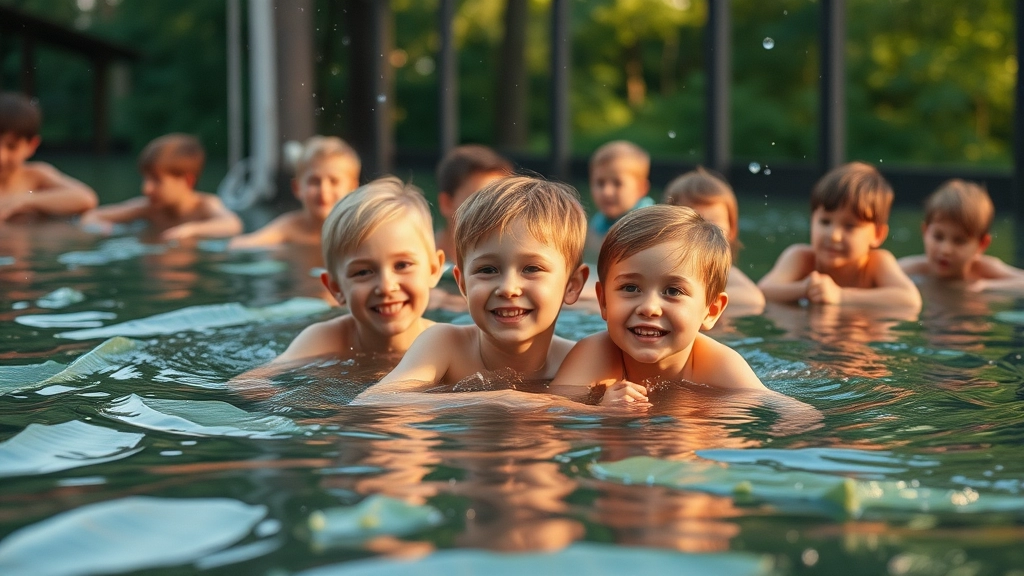Worried about summer camp drownings? You’re not alone.
The safety of our children is paramount, especially during summer camp activities. This article dives deep into the legal implications and lawsuits related to summer camp drownings, the common causes behind these tragic incidents, and the critical role lifeguards and camp staff play in preventing them. We’ll also explore the importance of safety regulations, mandatory swim tests, and effective communication between parents and camp staff.
But that’s not all.
We’ll highlight nonprofit initiatives advocating for stricter camp safety standards, the emotional and community impact following drowning incidents, and the legislative efforts aimed at improving summer camp safety. Finally, we’ll provide a comprehensive checklist for parents to help choose the safest camps for their children. Stay informed and ensure a safe, enjoyable summer camp experience for your kids.
Legal Implications and Lawsuits Related to Summer Camp Drownings
Are you worried about the legal implications of summer camp drownings? You’re not alone. When a tragic incident like a drowning happens at a summer camp, it’s not just heartbreaking; it’s also a legal minefield. Here’s what you need to know to navigate these troubled waters.
Why Legal Implications Matter
First things first, let’s get real. When a drowning occurs at a summer camp, it’s a big deal. We’re talking about potential lawsuits, criminal charges, and a whole lot of finger-pointing. The legal implications can be massive, affecting not just the camp but also its staff, and even the parents.
Who Can Be Held Liable?
Liability is often the first question that pops up. Who’s responsible? It can be:
- Camp Owners: They are usually the first in line. If the camp fails to provide a safe environment, they’re in hot water.
- Lifeguards and Staff: If they were negligent or untrained, they could also face serious consequences.
- Equipment Manufacturers: If faulty equipment played a role, they could be held accountable too.
Types of Legal Actions
There are generally two legal routes:
- Civil Lawsuits: This is where the family of the victim sues for damages. Think medical expenses, funeral costs, and emotional distress.
- Criminal Charges: If negligence or foul play is involved, criminal charges could be filed against the responsible parties.
Real-Life Examples
Let’s look at a real case. In 2019, a summer camp in the UK faced a lawsuit after a child drowned in their pool. The investigation revealed that the lifeguard on duty was distracted and the safety equipment was outdated. The camp ended up paying a hefty settlement and faced severe reputational damage.
How to Mitigate Legal Risks
If you’re running a camp, here are some steps to safeguard against legal issues:
- Proper Training: Ensure all staff are well-trained and certified.
- Regular Inspections: Keep your equipment up-to-date and conduct regular safety checks.
- Clear Policies: Have clear, written policies for all aquatic activities.
The Bottom Line
Legal implications of summer camp drownings are no joke. They can lead to lawsuits, criminal charges, and long-lasting reputational damage. But with the right precautions, you can minimise these risks. So, if you’re a camp owner or a concerned parent, make sure you’re aware of these legal aspects to keep everyone safe.
For more tips on ensuring a safe and enjoyable camp experience, check out our Summer Camp Schedule Activities and Themes Guide and our Summer Camp Costs, Factors, Fees, and Savings Tips.
Common Causes of Drownings at Summer Camps
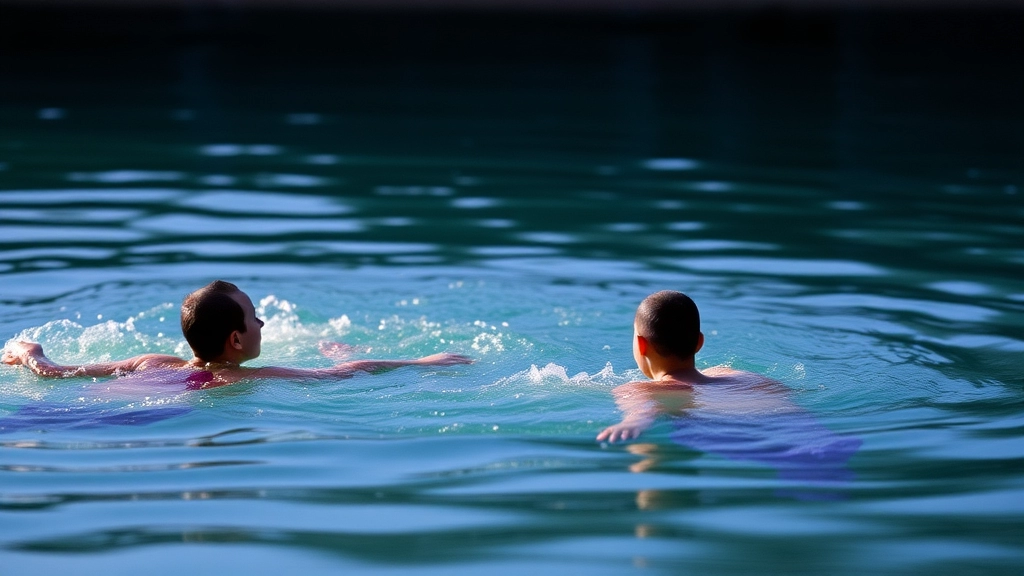
Ever worried about why drownings happen at summer camps?
Let’s break it down.
Lack of Supervision
First off, lack of supervision is a biggie.
Imagine a pool full of kids but not enough eyes watching them.
It’s a recipe for disaster.
Staff might be stretched too thin, or simply not trained well enough.
Inadequate Training
Speaking of training, inadequate training is another culprit.
Lifeguards and camp staff need to know their stuff.
CPR, rescue techniques, recognising a kid in distress—these aren’t optional skills.
They’re lifesavers, literally.
Overcrowded Pools
Overcrowded pools are another common issue.
Too many kids in one pool make it hard to keep track.
Picture a sardine can but with water and splashing.
It’s chaotic and dangerous.
Poor Swim Skills
Then there’s the matter of poor swim skills.
Not every kid is a fish in the water.
Some might be beginners, and without proper swim tests, it’s hard to know who needs extra attention.
Unsafe Pool Conditions
And let’s not forget about unsafe pool conditions.
Broken tiles, murky water, or missing safety equipment can turn a fun swim into a nightmare.
Fatigue and Overexertion
Kids get tired, and fatigue and overexertion can lead to accidents.
A tired kid is a vulnerable kid.
Weather Conditions
Lastly, weather conditions can play a part.
Sudden storms, high winds, or even extreme heat can create hazardous swimming conditions.
Real Stories
I remember hearing about a camp where a kid nearly drowned because the lifeguard was on their phone.
Or another where the pool was so overcrowded that a camper went unnoticed at the bottom for too long.
These aren’t just stories—they’re wake-up calls.
What Can Be Done?
So, what can camps do?
- Increase supervision: More eyes on the pool.
- Better training: Lifeguards and staff need top-notch skills.
- Limit pool capacity: No more sardine cans.
- Mandatory swim tests: Know who needs help.
- Regular pool maintenance: Keep it safe and clean.
- Monitor weather conditions: Stay alert and adapt.
The Role of Lifeguards and Camp Staff in Preventing Pool Incidents
How crucial are lifeguards and camp staff in keeping kids safe at summer camps? This is a question every parent should be asking. When it comes to pool safety, the role of lifeguards and camp staff cannot be overstated. They are the frontline defenders against pool incidents, and their vigilance can mean the difference between a fun summer and a tragic one.
Why Lifeguards Matter
Lifeguards are the eyes and ears of any aquatic activity. Their primary role is to prevent drownings and other accidents by:
- Constantly monitoring the pool area: Lifeguards must keep their eyes on the water at all times, scanning for any signs of distress.
- Enforcing pool rules: Rules like no running, no diving in shallow areas, and no roughhousing are there for a reason. Lifeguards ensure these rules are followed.
- Quick response to emergencies: In the event of an incident, lifeguards are trained to act swiftly and efficiently, performing rescues and administering first aid if necessary.
The Role of Camp Staff
While lifeguards are essential, camp staff also play a significant role in preventing pool incidents. Their duties include:
- Supervising campers: Staff members should always be present, especially during swim times, to keep an eye on the kids and ensure they follow safety guidelines.
- Conducting headcounts: Regular headcounts before, during, and after swimming sessions help ensure no child is left behind or goes unnoticed.
- Educating campers: Teaching kids about water safety, such as the importance of the buddy system and how to recognize dangerous situations, can go a long way in preventing accidents.
Collaboration is Key
The synergy between lifeguards and camp staff is crucial. They need to work together seamlessly to create a safe environment. Here’s how they can do it:
- Regular training sessions: Both lifeguards and staff should undergo regular training to stay updated on the latest safety protocols.
- Clear communication: Establishing clear lines of communication between lifeguards and staff ensures everyone is on the same page.
- Emergency drills: Conducting regular emergency drills can prepare both lifeguards and staff to act quickly and efficiently in real-life situations.
Real-Life Example
Picture this: A child starts struggling in the deep end of the pool. A lifeguard spots it immediately and blows the whistle. Camp staff, already trained to respond, quickly clear the pool area and assist in the rescue. The child is brought to safety within seconds, all thanks to the coordinated efforts of lifeguards and camp staff.
For more information on how to keep your kids safe and entertained this summer, check out our Ultimate Guide to Summer Camps for Kids and explore our Essential Guidelines for Summer Camp Safety.
Safety Regulations for Camps with Aquatic Activities
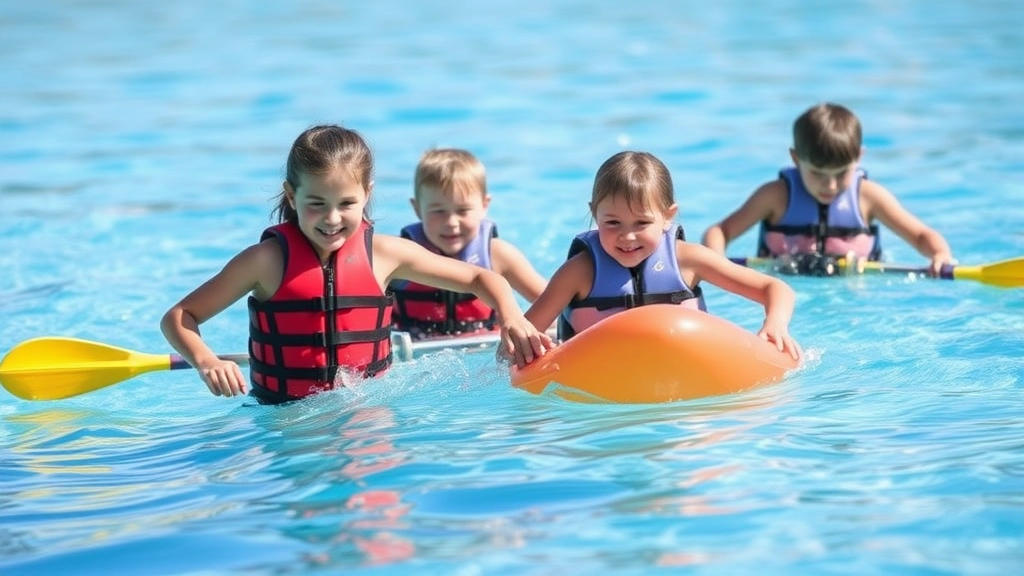
Ever wondered what safety regulations are in place for camps with aquatic activities?
Yeah, me too.
It’s a big deal and something every parent should know about.
Why Are Safety Regulations Important?
Safety regulations are the backbone of keeping kids safe during camp activities, especially when water’s involved.
No one wants a fun summer to turn into a tragedy.
These rules exist to prevent accidents and ensure everyone knows what to do if something goes wrong.
What Do Safety Regulations Cover?
Here’s a quick rundown:
- Lifeguard Requirements: Camps must have certified lifeguards on duty at all times. No exceptions.
- Staff Training: All camp staff should be trained in CPR and First Aid. It’s non-negotiable.
- Swim Tests: Before any camper dips a toe in the water, they need to pass a swim test. This helps staff know who needs extra supervision.
- Buddy System: Campers should always swim with a buddy. It’s a simple yet effective way to keep an eye on each other.
- Emergency Plans: Camps need a solid emergency action plan. Everyone should know what to do if something goes wrong.
Real-Life Example: The Importance of Lifeguards
Imagine this: A camp in the UK had a near-drowning incident because there weren’t enough lifeguards on duty.
Scary, right?
This led to stricter enforcement of lifeguard regulations, ensuring that such an oversight never happens again.
How Can Parents Ensure Camps Follow These Regulations?
Here’s what I do:
- Ask Questions: Don’t hesitate to grill the camp director about their safety protocols.
- Check Certifications: Make sure lifeguards and staff have up-to-date certifications.
- Inspect the Pool Area: If possible, visit the camp and take a look at their aquatic facilities.
The Importance of Mandatory Swim Tests for Campers
Are you worried about your child’s safety at summer camp, especially around water activities? You’re not alone.
Why Swim Tests Matter
Mandatory swim tests are a game-changer when it comes to ensuring the safety of kids at summer camps. Let’s break it down:
- Assess Skill Levels: Swim tests help camp staff understand each camper’s swimming capabilities. This way, they can group kids according to their skill level and provide appropriate supervision.
- Prevent Overconfidence: Some kids might think they’re better swimmers than they actually are. A swim test sets the record straight, preventing overconfidence that could lead to dangerous situations.
- Tailored Activities: Knowing a child’s swimming ability allows camps to tailor aquatic activities to be safe and enjoyable. Whether it’s swimming, canoeing, or just splashing around, activities are adjusted to fit the campers’ skills.
Real-Life Example
Imagine this: Sarah, a 10-year-old who claims she can swim like a fish, joins a summer camp. Without a swim test, she might be allowed to join advanced swimming activities. But with a swim test, the camp staff quickly realise she’s more comfortable in the shallow end. They adjust her activities accordingly, keeping her safe and happy.
How Swim Tests Are Conducted
Swim tests aren’t complicated. Here’s a quick rundown:
- Basic Swim: Campers are asked to swim a certain distance, usually in a pool.
- Treading Water: They might be asked to tread water for a set time to show they can stay afloat.
- Floating: Some tests include floating on the back to ensure the child can rest if needed.
Benefits for Parents
As a parent, knowing that a camp requires swim tests can give you peace of mind. It shows that the camp takes water safety seriously. Plus, it opens up a line of communication between you and the camp staff. You can discuss your child’s swimming abilities and any concerns you might have.
Stories from Camps
At Camp Safe Waters, they implemented mandatory swim tests a few years ago. The result? A significant drop in water-related incidents and a boost in parents’ confidence. One parent shared, “I was always nervous about my son being around water. But knowing he had to pass a swim test put my mind at ease.”
Checklist for Parents
When choosing a camp, make sure to ask:
- Do they conduct mandatory swim tests?
- How often are the tests conducted?
- What happens if a child doesn’t pass the swim test?
- Are lifeguards and staff trained to handle different swimming levels?
For more information on camp safety and activities, you might want to check out our summer camp packing checklist and explore other fun activities at summer camp to ensure a comprehensive and enjoyable experience for your child.
Parental Concerns and Communication with Camp Staff
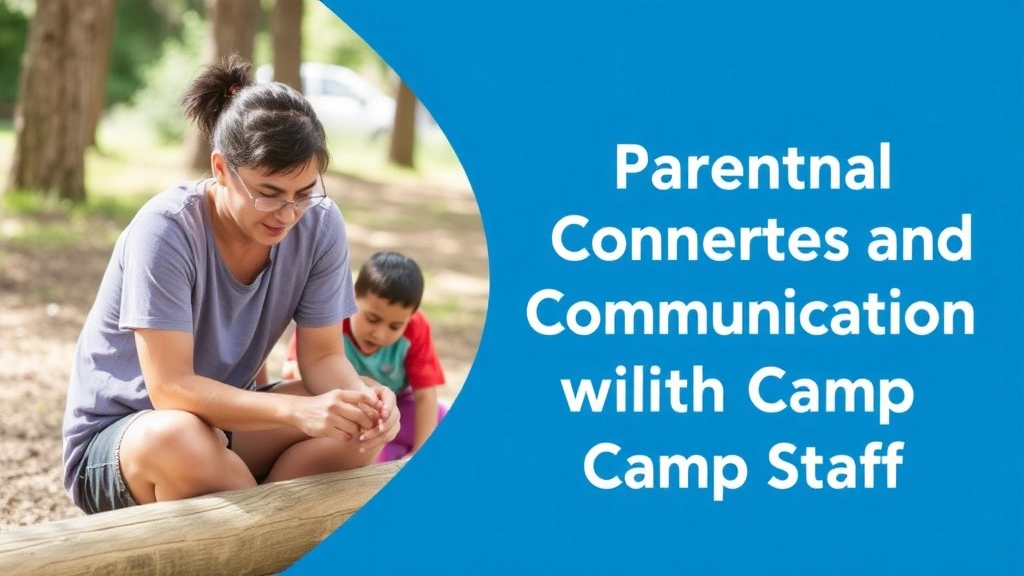
Alright, let’s get real.
As a parent, sending your kid to summer camp can be nerve-wracking.
Especially when it involves water activities.
You know what I’m talking about: drownings, safety, lifeguards.
These are legit worries.
So, how do you tackle them?
Ask the Right Questions
When you talk to the camp staff, don’t hold back.
Here are some questions you need to ask:
- What’s the camper-to-staff ratio?
- Are the lifeguards certified?
- How often are safety drills conducted?
- Is there a mandatory swim test?
These questions aren’t just for your peace of mind.
They’re essential for your child’s safety.
Build a Relationship with the Staff
Communication is key.
Get to know the camp directors, lifeguards, and even the counsellors.
When you have a good relationship, you’re more likely to get honest answers.
And let’s be real.
You’ll feel a lot better knowing the people responsible for your kid are approachable.
Regular Updates
Ask if the camp provides regular updates.
Some camps send daily emails or photos.
Others might have a parent portal.
Knowing what’s going on can ease a lot of your concerns.
Emergency Protocols
Find out what the camp’s emergency protocols are.
- How do they handle accidents?
- What’s their plan if a child goes missing?
- Do they have a direct line to local emergency services?
These are not just “nice-to-knows.”
They’re “need-to-knows.”
Trust but Verify
If the camp has a good reputation, that’s a plus.
But don’t just rely on word of mouth.
- Visit the camp.
- Talk to other parents.
- Check online reviews.
Do your homework.
Final Thoughts
At the end of the day, it’s about keeping your child safe.
Ask the tough questions.
Build a relationship with the staff.
Stay informed.
And trust your gut.
Your child’s safety is worth it.
Related Topics
- Common Causes of Drownings at Summer Camps
- The Role of Lifeguards and Camp Staff in Preventing Pool Incidents
- Safety Regulations for Camps with Aquatic Activities
Keep the conversation going.
Stay informed, stay safe.
Nonprofit Initiatives Advocating for Stricter Camp Safety Standards
Worried about your child’s safety at summer camp? You’re not alone. Many parents share the same concerns, especially when it comes to water activities. Summer camp drownings are real, and they’re scary. But guess what? Nonprofit organisations are stepping up to make camps safer for our kids.
Why Nonprofits Care About Camp Safety
Nonprofits are on a mission. They see the gaps in camp safety and they’re not just sitting around. They’re pushing for better rules and stricter safety standards. Why? Because every child deserves a safe and fun camp experience. Simple as that.
What Are These Nonprofits Doing?
Let’s break it down:
- Awareness Campaigns: Nonprofits are spreading the word about the importance of camp safety. They use social media, blogs, and even local events to get the message out.
- Advocacy: These organisations are in the ears of lawmakers, pushing for stricter regulations and better enforcement.
- Training Programs: They offer training for camp staff, ensuring everyone knows how to keep kids safe around water.
- Resources for Parents: Many nonprofits provide checklists and guidelines to help parents choose the safest camps.
Real Stories, Real Impact
Here’s a quick story. A nonprofit called Safe Kids Worldwide launched a campaign after a tragic drowning incident at a summer camp. They didn’t just talk about it; they took action. They got new safety laws passed in several states. Now, camps in those states must have certified lifeguards and mandatory swim tests. That’s real change.
How You Can Get Involved
Want to make camps safer? Here’s how you can help:
- Donate: Nonprofits rely on donations to fund their initiatives.
- Volunteer: Offer your time to help with awareness campaigns or training sessions.
- Spread the Word: Share information about camp safety with other parents.
- Contact Lawmakers: Let your local representatives know that you care about camp safety.
The Bottom Line
Nonprofit initiatives are crucial in advocating for stricter camp safety standards. They’re the unsung heroes working behind the scenes to ensure our kids have a blast at campâsafely. So, next time you’re worried about summer camp drownings, remember there are organisations out there fighting to make things better.
For more information on how to ensure a fun and safe camp experience, check out our guide on summer camp swimming safety and our essential summer camping checklist.
Emotional and Community Impact Following Drowning Incidents
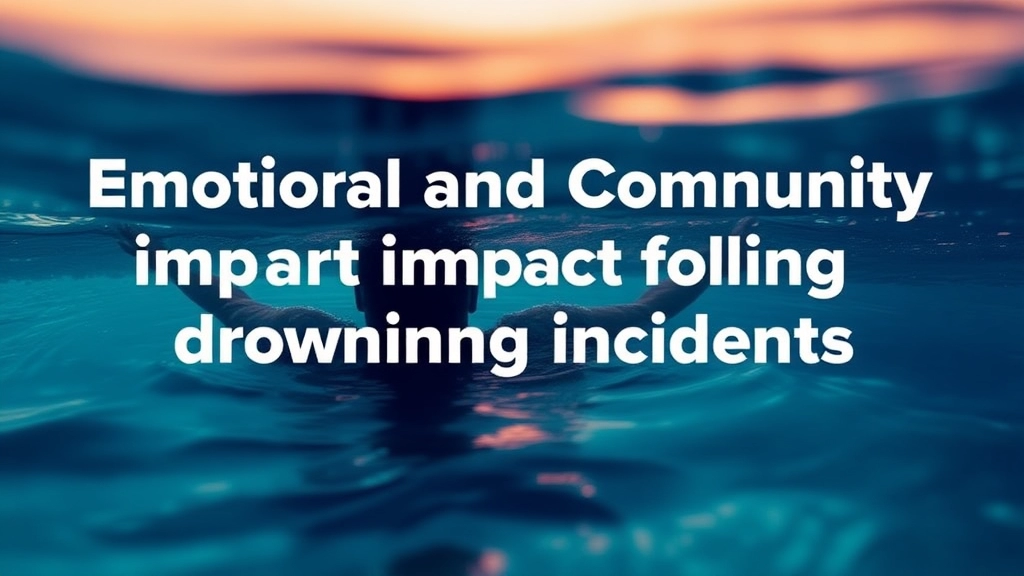
Ever wondered what happens to a community after a tragic drowning at a summer camp?
It’s something no one wants to think about, but it’s crucial.
Drowning incidents don’t just affect the immediate family.
They ripple through the entire camp community.
The Immediate Shock
First off, there’s the immediate shock.
Parents send their kids to camp expecting them to come back with stories of new friends and adventures.
Not a tragic accident.
The emotional toll on the family is unimaginable.
Camp Staff and Their Emotional Rollercoaster
Camp staff and lifeguards feel it too.
They’re often young, just starting their careers.
Imagine the guilt and trauma they carry.
The Kids
And let’s not forget the other campers.
They lose a friend.
They might even witness the incident, which can be traumatic.
The Broader Community
The broader community feels it too.
Schools, local businesses, and neighbours.
Everyone gets hit with a wave of grief and questions.
Community Support and Healing
So, how does a community heal?
It starts with support.
Counselling services for the family, staff, and campers.
Community vigils and memorials can also help.
Real Stories, Real Impact
Take the story of a camp in Essex.
After a tragic drowning, the local community rallied together.
They raised funds for the family and camp safety initiatives.
It’s heartening to see, but it’s a reminder of the long road to healing.
Preventative Measures
Communities often push for better safety standards after such incidents.
They lobby for stricter regulations and better training for camp staff.
The Long-Term Impact
Long-term, these incidents can lead to real change.
More awareness, better safety protocols, and hopefully, fewer tragedies.
How Can You Help?
Wondering how you can make a difference?
- Support local initiatives advocating for camp safety.
- If you’re a parent, ask tough questions about camp safety measures.
- Encourage open conversations about water safety with your kids.
Legislative Efforts to Improve Summer Camp Safety
Are you worried about sending your kids to summer camp because of safety concerns? You’re not alone. Many parents share the same anxiety, especially when it comes to water activities. The good news is that legislative efforts are underway to make summer camps safer for all children. Let’s dive into what’s being done and how it can impact your peace of mind.
Why Legislation Matters
When it comes to summer camp safety, laws and regulations are crucial. They set the groundwork for how camps should operate, particularly those with aquatic activities. Without these guidelines, there’s a higher risk of incidents like drownings, which can be devastating for families and communities.
Key Legislative Measures:
- Mandatory Lifeguard Presence: One of the most significant legislative efforts is the requirement for trained lifeguards to be present during all aquatic activities. This isn’t just a suggestion; it’s becoming a legal necessity.
- Swim Tests: Some laws are pushing for mandatory swim tests for all campers. This helps identify kids who might need extra supervision or swimming lessons.
- Staff Training: Legislation is also focusing on ensuring that all camp staff undergo rigorous training in CPR, first aid, and emergency response. This isn’t just for lifeguards but for all staff members.
- Regular Inspections: Camps are now subject to more frequent and thorough inspections to ensure compliance with safety standards. This includes checking the condition of pools and other aquatic facilities.
Real-Life Examples
Take, for instance, the state of California. They’ve recently passed a law requiring all summer camps to have a minimum number of certified lifeguards based on the number of campers. This has already led to a noticeable decrease in pool-related incidents.
In another example, New York has implemented a rule where camps must conduct daily safety drills, including water rescue scenarios. These drills help prepare staff for real-life emergencies, making camps safer overall.
What This Means for Parents
As a parent, these legislative efforts should give you some peace of mind. But how do you know if a camp is following these regulations? Here’s a quick checklist:
- Ask About Lifeguards: Make sure the camp has certified lifeguards and ask about their ratios to campers.
- Inquire About Swim Tests: Find out if the camp conducts swim tests and what their protocol is for kids who aren’t strong swimmers.
- Check Staff Training: Ask about the training that all staff members receive, not just lifeguards.
- Look for Inspection Reports: Some states publish inspection reports online. Take a few minutes to look these up before making a decision.
For more tips on ensuring your child’s safety, check out our comprehensive guide on summer camp registration forms and how they can help you gather essential safety information. Additionally, explore our article on Sunshine Summer Camp programs to learn about camps that prioritize safety and fun.
How to Choose Safe Camps for Children: Checklist for Parents
Worried about sending your kid to summer camp?
I get it.
Safety is a big deal, especially when it comes to our kids.
So let’s break it down.
Here’s a checklist to help you pick the safest camp for your child.
1. Research Camp Accreditation
- Why it matters: Accredited camps follow strict safety guidelines.
- What to look for: Check if the camp is accredited by organisations like the British Activity Providers Association (BAPA).
2. Check Staff Qualifications
- Why it matters: Qualified staff are better at handling emergencies.
- What to look for: Ensure lifeguards have current certifications and camp staff are trained in first aid and CPR.
3. Review Safety Policies
- Why it matters: Clear policies mean the camp takes safety seriously.
- What to look for: Ask about their emergency procedures, supervision ratios, and how they handle medical issues.
4. Inspect Facilities
- Why it matters: Safe facilities reduce the risk of accidents.
- What to look for: Visit the camp if possible. Check the condition of pools, playgrounds, and cabins.
5. Ask About Swim Tests
- Why it matters: Swim tests ensure kids are safe in the water.
- What to look for: Confirm that the camp conducts mandatory swim tests for all campers.
6. Communication is Key
- Why it matters: You need to know what’s happening while your child is away.
- What to look for: Ask how the camp keeps parents informed about daily activities and any incidents.
7. Read Reviews and Testimonials
- Why it matters: Real experiences give you the inside scoop.
- What to look for: Look for reviews from other parents. Pay attention to any mentions of safety concerns.
8. Trust Your Gut
- Why it matters: If something feels off, it probably is.
- What to look for: Trust your instincts. If a camp doesn’t feel right, keep looking.
9. Legislative Compliance
- Why it matters: Camps must follow local laws and regulations.
- What to look for: Ask if the camp complies with all local safety regulations.
10. Nonprofit Initiatives and Advocacy
- Why it matters: Some organisations push for higher safety standards.
- What to look for: Check if the camp is involved with any safety advocacy groups.
Choosing a safe camp for your child doesn’t have to be stressful.
Use this checklist to make an informed decision.
Remember, safety first!
Your child’s summer should be fun and safe. For more tips on ensuring a safe and enjoyable experience, check out our guide on sexual safety at summer camps.
Feel free to share this checklist with other parents. And if you’re looking for some engaging activities for your child, don’t miss our list of top 10 exciting summer camp activities.
Because peace of mind is priceless.
FAQs on Summer Camp Drownings
What are the common causes of drownings at summer camps?
Common causes include lack of supervision, inadequate training of staff, overcrowded pools, poor swim skills among campers, unsafe pool conditions, fatigue and overexertion, and weather conditions.
Why is lack of supervision a significant risk factor?
When there aren’t enough staff members to watch over the kids, the risk of drowning increases. Insufficient supervision can lead to delayed response in emergency situations.
How does inadequate training contribute to drowning incidents?
Staff and lifeguards need to be well-trained in CPR, rescue techniques, and recognizing signs of distress. Without proper training, they may not be able to respond effectively in emergencies.
Why are overcrowded pools dangerous?
Overcrowded pools make it difficult to monitor all swimmers effectively. This can lead to situations where a struggling swimmer goes unnoticed.
What safety regulations should camps follow for aquatic activities?
Key regulations include having certified lifeguards on duty, staff trained in CPR and First Aid, mandatory swim tests for campers, implementing a buddy system, and having a solid emergency action plan.
How can parents ensure camps follow safety regulations?
Parents should ask questions about the camp’s safety protocols, check staff certifications, inspect the pool area if possible, and ensure the camp has a good reputation for safety.
What are the emotional impacts of a drowning incident on the camp community?
The immediate family, camp staff, other campers, and the broader community all experience significant emotional tolls. Support through counseling, community vigils, and memorials is crucial for healing.
What preventative measures can be taken to avoid drowning incidents?
Preventative measures include increasing supervision, better training for staff, limiting pool capacity, conducting mandatory swim tests, regular pool maintenance, and monitoring weather conditions.
How can communities support each other after a drowning incident?
Communities can provide counseling services, hold vigils and memorials, raise funds for affected families, and advocate for better safety standards and regulations.
What should parents look for when selecting a summer camp with aquatic activities?
Parents should ensure the camp has certified lifeguards, well-trained staff, a good camper-to-staff ratio, regular safety drills, and a mandatory swim test for all campers.
How can I help promote camp safety in my community?
You can support local initiatives advocating for camp safety, ask tough questions about camp safety measures if you’re a parent, and encourage open conversations about water safety with your kids.
References
-
CDC – Drowning Facts
-
Red Cross – Kids Swim Lessons
-
Safe Kids Worldwide – Swimming Safety Tips

